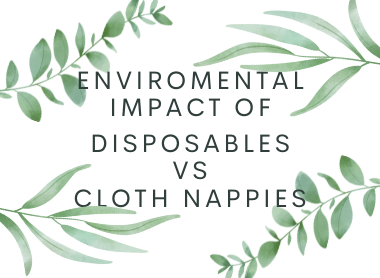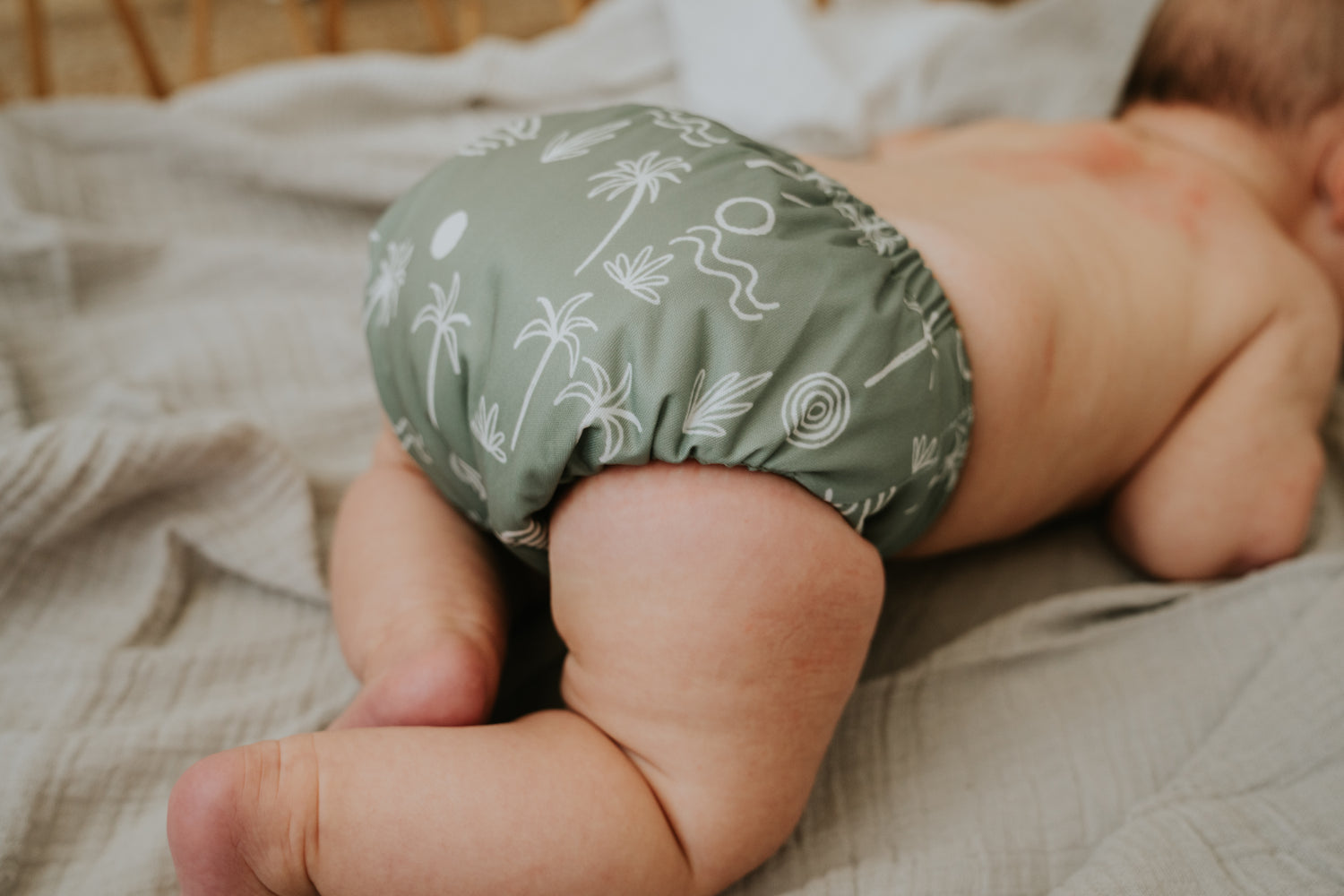Are cloth nappies better for our environment than disposables?
Let’s dive right in and compare the two.
The average child uses about 6,000+ disposable nappies from birth to toilet training.
That’s 6000 nappies and their waste sitting in a pile somewhere, per child!
Now they estimate that disposables can take up to 500 years to decompose and even then, plastic products are never really broken down, unless they are recycled, they stay in the environment forever.
So, the first EVER disposable is still out there somewhere. How crazy is that?!
There are biodegradable disposable nappies on the market, but they aren't completely biodegradable (usually between 60-80%) and often require a commercial process to breakdown completely, and if they go to landfill, landfill is designed to slow the biodegradation process down, so it almost defeats the purpose and is not much better than your standard disposable.
Did you know that putting a disposable nappy in your rubbish bin with human waste is a bio-hazard and even with the use of disposables nappies it is recommended that you knock any poop into the toilet before throwing them 'away'?
Each child requires an average of 30 cloth nappies from birth through to toilet training. Yes, cloth nappies also contain synthetic materials, and yes they are also not biodegradable BUT cloth nappies have a much longer life and much less environmental impact - especially when used for multiple children. One stash of 30 cloth nappies could save approximately 18,000 disposables from landfill if you used the same stash across 3 children, how crazy is that?
Once your children are toilet trained, your cloth nappies can then be resold on to another family for use as there is a good market for second hand cloth nappies, they can also be donated to charity or gifted to someone in need. If all other options fail, you could then throw them out - however putting 30 cloth nappies into landfill instead of 6000+ potential disposables, is still a much better option of the two.
A key point here is reducing single-use plastic, and disposable nappies are a single-use plastic product and cloth nappies are not as they can be reused over and over again.
The biggest misconception about cloth vs disposables nappies is the argument that cloth uses more water consumption and energy in the washing of them hence making them no worse than disposables. Something that people tend to forget is that the manufacture of disposable nappies uses a significant amount of water and natural resources as well - on average the manufacture of disposable nappies use 20 times more raw materials, three times more energy, and twice the amount of water. Even after taking into account the resources used in washing and drying cloth nappies, reusable is still the better option environmentally and economically.
The Australian Nappy Association has a great article really breaking down the numbers futher and comparing these factors. Click here to read more.
After all, wouldn’t you rather buy a shirt you can wash and wear again and again over one you wear once and then you must throw out? Cloth nappies are no different... benefit is they look cute and contain everything much better.






